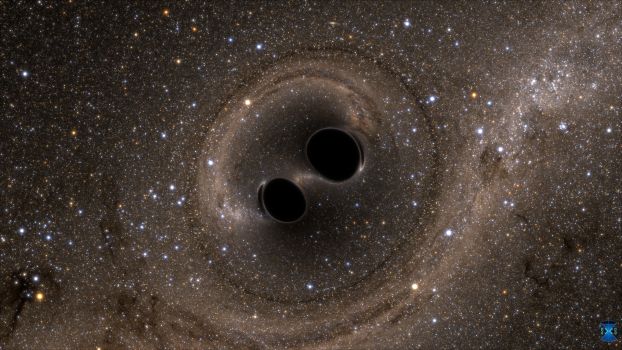Anything that passes too close, from a wandering star to a photon of light, gets captured. Most black holes are the condensed remnants of a massive star, the collapsed core that remains following an explosive supernova. However, the black hole family tree has several branches, from tiny structures on par with a human cell to enormous giants billions of times more massive than our sun.
Formed from the condensation of raw materials in the early cosmos, primordial black holes emerged soon after the Big Bang. Most were extremely tiny, and while those with the lowest-mass have likely evaporated, primordial black holes with larger masses may still exist - though even those have remained undetected.
In the mass range between stellar-mass and supermassive blackholes - that is hundreds to hundreds-of-thousands of solar masses - are intermediate-mass black holes. Astronomers have spotted evidence for a handful of candidates, but none have been conclusively detected. Theorists believe there are three scenarios for their formation: They could be primordial black holes, they might have formed in environments dense with stars, or they formed from mergers of stellar-mass black holes.
The most common black holes form as the result of a supernova, the catastrophic death of a massive star. Most stellar-mass black holes are roughly five to ten times more massive than our sun, but NSF's Laser Interferometer Gravitational-Wave Observatory (LIGO) has detected several with masses up to 100 times that of our sun.
Supermassive black holes have masses ranging from millions to billions of solar masses and appear to be in the center of almost all galaxies. An important area of modern astrophysics is determining how supermassive black holes came to be: Were they formed with such high masses, or did their mass build up over time? The NSF-funded Event Horizon Telescope (EHT) project is attempting to capture an image of a black hole, setting its sights on two supermassive black holes, one in the center of the galaxy Messier 87 and the other in our Milky Way.
How are black holes studied?
Black holes have long inspired the imagination yet challenged discovery. However, from a combination of theory and observation, scientists now know much about these objects and how they form, and can even see how they impact their surroundings.
So, how does one study a region of space that is defined by being invisible?
Theorists can calculate properties of black holes based on their understanding of the universe, and such discoveries have come from a range of great thinkers, from Albert Einstein to Stephen Hawking to Kip Thorne. However, despite being so powerful, it's hard to see something that does not emit photons, let alone traps any light that passes by.
Now, nearly a century after scientists suggested black holes might exist, the world now has tools to see them in action. Using powerful observatories on Earth, astronomers can see the jets of plasma that black holes spew into space, detect the ripples in space-time from black holes colliding, and may soon even peer at the disc of disrupted mass and energy that surrounds the black hole's event horizon, the edge beyond which nothing can escape.

